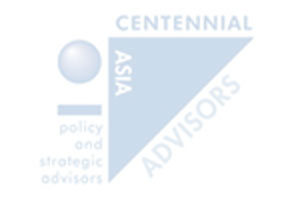Asian Insights
A summary of “Asian Insights” weekly update is published here. The full version is available through paid subscription. Please click here to register your interest. Our executive will get in touch with you.

Asian resilience in a changed global environment
Two downside risks confront the global economy, with implications for Asia. The Ukraine crisis and the subsequent surge in energy and food costs is one. The other is that China is now likely to suffer a surge in covid infections that will slow its economy and hurt global growth.
- We present scenarios for the impact of each of these risks on global economic growth. In our baseline scenario, global growth suffers a hit in 2Q22, after which economic activity recovers a degree of momentum. Overall, we find that global growth diminishes moderately in 2022. The surge in inflation peaks in 2Q22, then eases.
- There are a number of factors that mitigate the slowdown – energy intensity of the global economy has declined by half since the major oil shocks of the 1970s, for example.
- The most powerful mitigating force, however, is the easing of the pandemic in most of the world outside China. This unleashes pent-up demand, the impact of which is reinforced by the massive pile of excess savings in the world. We also see cross-border travel resuming with a vengeance, boosting prospects for tourism to recover smartly – which would be of particular benefit to the tourism-dependent economies in Southeast Asia.
- Consequently, the ex-China, the Asian economies should remain remarkably resilient in the face of these shocks. In most cases, we cut our 2022 growth forecasts by only 20-40 basis points.
- China, however, is likely to suffer a severe slowdown. Even with policy makers turning to stimulus, we expect growth to come down to 3.8% in our baseline scenario (from our previous forecast of 5%). In our downside scenario, China’s economy barely grows in 2022. A major consideration in this analysis is that it will take time for China’s policy response to be effective due to contradictory policy aims.
Highlights from the CAA Weekly Table – Asian political risks:
There were three key sets of elections – in Korea, India and Malaysia:
- In South Korea, the conservative candidate, Yoon Suk-yeol, was elected president with the narrowest of margins. That limited mandate, and the fact that his opponents have a strong majority in the national assembly, will constrain him from fully implementing his policies. Nevertheless, his hard line towards North Korea and China could raise political risks.
- India’s ruling BJP won 4 out of 5 state assembly elections: The BJP lost only in Punjab state where the rising AAP party demolished the once-great Congress party. A divided opposition puts Prime Minister Modi in a strong position for a third term in the 2024 general election.
- Malaysia’s ruling Barisan Nasional (BN) coalition led by UMNO won a landslide victory in the Johor state elections: BN will almost certainly call an early election around mid-year which it has a good chance of winning with a solid majority. That could provide some political stability which has been in short supply since the 2018 general election.

Highlights from the CAA Weekly Table:
Asian economic prospects:
- China’s policy makers are stepping up stimulus efforts, with measures focused on helping small firms. However, they remain unwilling to mount an aggressive response and continue to toughen regulation of private enterprise, which hurt business confidence.
- Indian inflation is a worry despite the central bank’s views to the contrary. In Indonesia, there is potential for an upside surprise in economic growth, with consumers stepping up their spending. Risks to Hong Kong’s growth are clearly to the downside. In the Philippines, the conditions for an acceleration in growth are falling into place.
Singapore’s Budget: Expect medium-term adjustments to raise inflation
- The budget signalled a shift in the government’s priorities from cushioning the economy against COVID-19 to addressing longer-term imperatives such as enhancing productivity in local firms, upskilling the local labour force, and Singapore’s nascent green transition.
- The slightly negative fiscal impulse notwithstanding, the meaningful step up in direct transfers to households to offset cost-of-living increases and a concerted effort to raise low wage incomes could produce a near-term jolt to domestic demand.
- On the revenue front, policymakers have introduced several adjustments to their tax policies in light of rising structural expenditures on healthcare and social needs. The mooted GST hike will be pushed out further out and implemented in a more gradual manner.
- This, alongside a) incrementally tighter controls on foreign worker inflows and b) an ambitious carbon tax hike that brings Singapore close to parity vis-a-vis large, developed countries as soon as 2030 should imply moderately higher medium-term inflationary pressures. This could lead to additional pre-emptive monetary policy tightening this year.
Thailand: A good chance of upside surprise in 2022
- Thailand’s economic performance has been disappointing in recent years, but there are now signs that the economy is turning around and could even deliver an upside surprise.
- The authorities are determined to put the pandemic behind them. This paves the way for recovery and subsequent growth on multiple fronts in 2022.
- We estimate GDP growth at 4.7% in 2022, with the chance of an upside surprise if foreign tourist arrivals reach past the projected 5.6 million tourists to 10 million tourists.
- The upside scenario for tourist arrivals is achievable as Thailand pushes for travel bubbles with its traditional markets for tourism and as pent-up demand for travel persists.
- Global demand conditions and revved up government spending render the manufacturing and construction sector bright spots for the economy in 2022.
- Crucially, the revival of tourism will lift the Thai Baht from its prolonged weakness throughout the duration of the pandemic.
